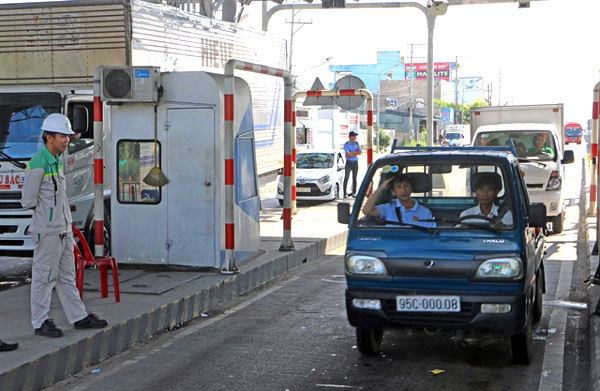Road administration to inspect toll collection at 11 BOT tollgates
No standard distance between toll stations
 |
| An electronic toll collection station at the BOT road project Can Tho-Phung Hiep in the southern province of Can Tho. — VNA/VNS Photo Thanh Liem |
The draft circular, which is set to replace Circular No 49/2016/TT-BGTVT on the construction, organisation and operation of toll booths, states that the intended locations of the toll stations must be made public when the project is announced and must be already planned before the project’s feasibility report is approved.
The toll stations’ locations are supposed to ensure “harmonious benefits” between all parties – the State, investor, and road users – and must be conducive to the collection of tolls.
Given the constrained State budget, public-private partnerships – including the BOT model –have become more commonplace to finance infrastructure projects.
However, they have recently been subjected to intense scrutiny from both society and Government agencies after multiple protests throughout the country have shed light on the rampant violations and opaque decision-making in these projects.
The draft circular is aimed at providing more transparency in the BOT projects.
For BOT projects that would collect tolls on a per-trip basis, the locations of the stations must be made known to the district’s authorities and residents 30 days before the decision permitting the construction of the stations is made.
For BOT roads that form part of the national road system, the toll stations must be placed within the parameters of the project and the decision can only be made after gathering opinions from the municipal or provincial National Assembly delegate, People’s Committee, and automobile transport association.
For local BOT roads that connect to the national road, the toll stations must stay within the parameters of the project that the local authorities have approved with input from the transport ministry,
In case of BOT roads that do not connect with the national road, the stations’ locations are decided by the provincial People’s Committee.
VNS
 According to a new draft circular that the transport ministry is working on, the public will have a say on whether the locations of toll stations on Build-Operate-Transfer (BOT) roads are appropriate.
According to a new draft circular that the transport ministry is working on, the public will have a say on whether the locations of toll stations on Build-Operate-Transfer (BOT) roads are appropriate.